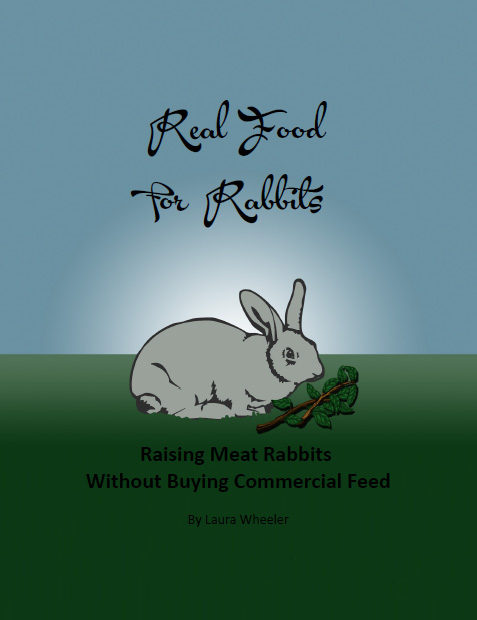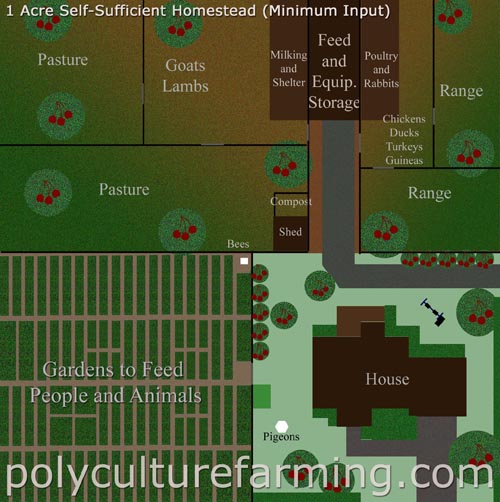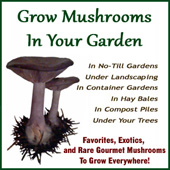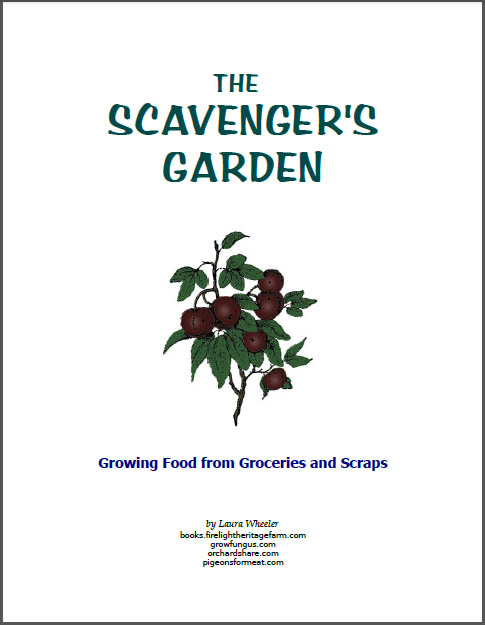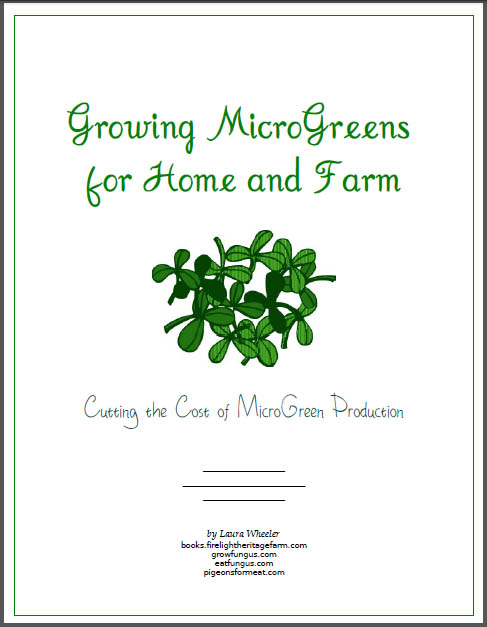 Click to Download Your Free Heritage Pickling and Culturing e-Book Now!
Click to Download Your Free Heritage Pickling and Culturing e-Book Now!
Instant Download, NO Registration Required!
REAL Self-Sufficiency on 1 Acre
After seeing a rather improbable looking graphic running around on social media, promising self-sufficiency on 1 acre, I felt compelled to write a rebuttal, entitled The Myth of One Acre Self-Sufficiency. In the process of that, it occurred to me that perhaps I ought to produce a more realistic plan, based on our experiences with smaller livestock, and limited growing conditions, and based on recommendations I made in my rebuttal.
This diagram assumes a few things, that are never made clear in the original.
- It assumes that the property is inhabited by a FAMILY, not a single person.
- It assumes that the family knows that 100% self sufficiency isn't a realistic goal, but that with careful and intelligent choices for land usage, 80% self-sufficiency in food, for yourself AND your animals, is a realistic goal.
- It assumes that the family occupying the land is smart enough to know that self-sufficiency means providing for YOU, and providing for YOUR ANIMALS also.
- It assumes that the family has little time, and needs to maximize their efforts.
- It assumes the family actually wants to SAVE money, not pour out MORE money each month to keep things going. (This is not possible if you have to buy all animal feed.)
- It assumes that the family is wise enough to know that plant agriculture only is not fully sustainable without animals. Experts claim a 98% sustainability through plant only agriculture (no animal inputs), WITH chemical fertilizers and nutrient enhancers to maintain that much - not possible for organic growing. Plant based fertilizers are not sufficient to build soil long term, or even to maintain it. You will lose soil quality and volume every year using plant only agricultural practices (even if you do use chemicals). Plant and animals combined result in a 110% sustainability - which means it is regenerative and cumulative. Adding mulch and manure every year to your gardens will BUILD more soil every year, and it will get better and better. If you choose not to eat meat, then we recommend that you keep a few hutches of rabbits, and sell rabbits for the pet markets, or keep some sheep or goats for fiber production. They produce excellent cool manure that does not require composting prior to application on the gardens.
- It assumes that most properties will have some kinds of limitations on what you can raise - the most prevalent limitation is, no pigs. We do not feel that raising pigs in tight confinement is a good idea, they smell too bad in small areas (on 1 acre you will smell them everywhere), and they destroy the land if they have insufficient space.
- It assumes the family is wise enough to know that raising grain on 1/10 of an acre (all you would have available) is not a practical proposition - that the land can be better used otherwise, since the estimated 120 lbs of grain that you would end up with if you had a good year, is not exactly worth the effort, for either you, or your animals.
- It assumes that the family also understands that cows are not the wisest choice for very limited space. Needs for meat and milk can be more easily met by raising goats, lamb, poultry, and rabbits. All of these are very productive, even on small acreage.
- It also assumes that the reader understands the trade off between space with forage, and money. More land, more forage means less disease and less expense in raising your animals. Overstocked land results in more disease, more temperamental animals, more cost for feed. Land load guidelines can be found in this article: Animal Land Load Guidelines For Self Sufficiency Sustainability.
All of our diagramatic recommendations are also based on methods we have tested, and found to be more productive (no till intensive gardening, as outlined in our book, The Edge of Eden, which you can find in the sidebar of this website - the yellow book).
So... here is our diagram:
Click the image for a large printable size.
You will notice that the house on this diagram IS to scale. It is a home large enough for a family, with a two-car garage on the right end - there is even a swingset behind the garage (that funky black spiky looking thing). Unlike creators of previous diagrams of this type, we actually calculated the land mass of an acre (just barely more than 208 X 209 ft), then we created a grid in the graphics program, which gave us 10' increments. Ok, so the Dovecote and the Beehive aren't really to scale, they are shown larger than life, but they had to be visible, so we hope we are forgiven for that!
All those trees with cherries on them represent fruit trees or fruit bushes. There is probably room for more if you want to squeeze them in.
Herb beds and edible flowers, strawberry beds, etc, are shown in the areas around the house, in place of standard landscaping. Hedge like areas along the edge of the yard are also herb and decorative edible or medicinal plants.
There is a Dovecote in the front yard, for free-range pigeons. Pigeons take little space, can forage for themselves in some circumstances, and can be fed on many kinds of scraps and surplus. More on managing that may be found in our book Pigeons For Meat - Reviving the Forgotten Livestock. You can build a pigeon loft onto the shed or poultry house if you prefer to keep them confined instead of free flying.
We also show an 8X10 greenhouse - the light green rectangle between the garden and the house. Winter gardening without using heat is described in our Edge of Eden book (linked below), and this can really help you provide for you and your animals all year.
The garden is 1/4 acre. That is a BIG garden, and needs to be developed in stages, with a little more coming under cultivation each year. The diagram represents a MULCHED garden, with deep mulch, and will ONLY produce enough if a NO-TILL method is used. This is also the only way to reduce the work and problem issues down to a manageable amount. Incidentally, this garden is only 3/4 the size of the garden in the diagram published by Mother Earth News. Because it is a No-Till garden, and managed using intelligent intercropping, it can produce far more, with less work, and take much less space to do it. This garden will produce approximately 30-50% more than the larger conventional garden.
Weeds are used for animal feed as much as possible, as is all surplus garden produce, and all garden waste that can be used by the animals. The compost pile is primarily for animal manure from cleaning animal shelters.
Some crops are planted in the garden primarily for animal feed. Details on this and other garden management are in our book The Edge of Eden - High Yield No-Till Integrated Gardening.
The garden should contain a large number of perennial crops. They are low work, and high production in most cases. They need to be located in places where they will not be disturbed year after year (they also work well for borders, and to tuck in around the yard).
A beehive also sits in the corner of the garden space. It can easily be located elsewhere if fear of bees makes you uneasy working near them, we really just wanted to make sure that bees were represented.
The barn is shown in a cost saving design, with shared walls. The central barn provides storage for hay and grain (it can be open on the ends), and storage for any equipment. It may also be built with doors inside to access the milking area and goat and sheep shelters. Likewise, access to the nest boxes in the chicken house may be placed inside the barn. Rabbits can be housed in half of the section where the chickens reside (It can be a lean-to, and does not need to be enclosed in most climates), and there is plenty of room to house other poultry as well. The poultry coop/house needs to be predator proof, and so do the rabbit hutches (Predator proof rabbit hutches are discussed in our book, Real Food for Rabbits - look around the edges of this website, you'll see it.).
There is an issue here for which there is no perfect answer. I show the combined barn in the back of the acre. It is further from the house than some people would prefer, but there IS a reason. With the barn placed at the back, you can easily see the ranging poultry from almost anywhere on the property. If the barn were located at the front of the pastures, it would block the view of many of the areas that you might want better visibility to. You could have a separate barn and coop, one on each side of the property, locating the poultry closer to the house, but that would increase costs somewhat. Having a chicken coop that is just 50 ft from the house, and not hearing things at night from it, I feel that the extra distance for a predator proof coop is a reasonable choice, to keep good visibility from daytime predators and to keep the parts of the farm that I need to attend to visible during the day when I'm most likely to notice problems.
Many people also prefer to locate the poultry runs close to the garden, so the poultry can be turned out into the garden during the fall and winter. You could flip the back half to locate the poultry beside the garden, but doing so moves them further from the house in this kind of layout (Yes, we realize that the layout is almost NEVER duplicatable simply because every property falls differently in reality, but for purposes of discussing pros and cons of the layout shown, it is still worth mention.) Goats may also be loosed in the garden, if your fencing is secure, to do cleanup. This all changes though if you are doing 4 season gardening, or Back to Eden gardening, where you may prefer to clear out the surplus and haul it to the animals rather than having the animals tearing up things you do not want disturbed to that extent!
Sheep and goats can be pastured and housed together. Either one can provide good red meat, and goats are the best option on small property to provide milk. We diagrammed out a series of pens - one attached to the barn, and two outlying. They can be used separately, or with all animals allowed access to one or the other, or neither, simply by opening gates and closing them. Pastures can be sown with a mix of grazing plants, NOT just grass. Grass is not nutritious enough by itself to offset your feed bill, and it should be sown with clovers, field peas or beans, vetch, even flowering herbs. This provides the best possible grazing, and it may be mown and baled, or stacked in haystacks, or even made into silage if you choose for winter storage. Trees in the pastures are very helpful in providing additional feed, though they are more difficult to mow around, and you do need to protect them when they are young.
You may wish to raise a Veal calf instead of lambs. Rose Veal is butchered at about 8 months of age, and is fed first on milk, then on hay and natural forage - some people feed them grain, but we do not recommend it except when feeding them fodder trays (sprouted grains). This provides excellent meat in a small space, and it allows you to purchase surplus dairy bull calves which would die otherwise, which is a significant savings (though they should be left on mama for the first three days, and fed raw milk for at least two weeks for best health). There is insufficient space for even one beef cow, but a veal calf is butchered before it gets very large, so it can be accommodated - also, since it is only in the pen for 8 months, it is gentler on the land than an animal that takes 18 months to reach slaughter weight.
The poultry also has a series of three pens, which can be used to maintain healthy land, or to segregate some livestock for part of the year (if you wish to raise more than 1-2 turkeys for example). Ducks provide excellent red meat (our favorite is Muscovy), and if you select good stock, they can reproduce - you also need to provide good predator proof housing and close them in at night. Trees in the pastures help to deter flying predators, and provide good windfall fruit for the poultry to use to supplement feed. Other plants, such as blackberry vines, comfrey, and other aggressive growers can be useful for providing both shelter for the chickens, and feed for them (and for the rabbits, who love both comfrey and blackberry!).
We really recommend rabbits for meat. They are without doubt the most cost efficient, lowest maintenance, most productive meat animals. They take very little space, and they can be fed ENTIRELY on the produce of your farm. Yeah, we've done that too. And we also have a book about THAT. Real Food for Rabbits - Raising Meat Rabbits Without Buying Commercial Feed. They can eat so many different kinds of food that they can be fed from kitchen scraps, garden scraps, weeds, wild foods, and more.
When planting forage for your animals on small space, plants that easily take over are actually a good thing, as long as you don't put them where the neighbors will be taken over too. They will be able to recover from heavy grazing or harvesting more easily.
Everywhere that you have mulch, leaf piles that are not raked (this is a good thing sometimes), or other organic matter that stays fairly much in one place, you can also plant mushrooms. There are MANY good types of semi-wild mushrooms that can grow in mulch, leaf litter, compost, or in the grass. Wine Caps, Elm Oyster, various types of Agaricus, Scotch Bonnets, Parasols, and many other kinds are helpful in breaking down mulch to aid the growth of plants, and for providing another crop which doesn't take any extra space - it only requires that you use LOW ENERGY INPUT methods!
A good farm dog, and a good barn cat can be wonderful at keeping the pests and predators at bay. They will pull their own weight, and prevent a lot of problems, as long as you don't allow them to harass your livestock.
We left out the Fish. But there is room for a tank in the back yard to seasonally raise fish, or you can build an aquaponics system in your greenhouse, where you can raise semi-tropical fish all year throughout much of the US.
This kind of self-sufficient homestead uses less equipment than most. The equipment that is most needed is for processing animals when butchering. Gardening can be done, even on a large area, using nothing more than a shovel and a rake (Yes, we HAVE actually done this, we DO know what we are talking about). No-till does not take much in the way of gardening tools. Once established, only a trowel, shovel and rake and wheelbarrow are needed for hauling and distributing more mulch each year, and adding a scattering of manure once per year or less. With block gardening, you can work through it a few blocks per day, and it is not an overwhelming job to maintain the garden.
Achieving this level of self-sufficiency on 1 acre IS an achievable goal, but it requires dedication, the ability to learn, and saving of time, money, and energy whenever possible - that isn't done with a tractor. That is done by smart planning and intelligent methods.
If you have to work a full time job along with this, then your life will be full, because it will take several hours a day to meet the demands of the farm. But it has been done by many people, and can be done by anyone who is persistent and who loves the life.
This plan DOES provide for working from home - it would require sufficient space for the enterprise. That means a home office, a converted garage, or another shed for business space. If you sell eggs, hatching eggs make more money than eating eggs. If you sell mushrooms, they can be grown around other things if you sell outdoor varieties, and dried mushrooms do not spoil if they do not sell in time. You really DON'T have room to make a living from your livestock unless you sell microlivestock such as butterflies or moths (eggs or cocoons), or insect larvae, eggs from pigeons or quail to the specialty Asian markets, or breeding stock from pigeons, quail, bantam ducks or chickens, or rabbits. All of these things take very little space, though you'd have to carve out a reasonable amount for facilities for them. At that, you'd have to be managing it well, and selecting high demand items that sell for a healthy price.
When trying to get the most you can out of a small piece of land, keep in mind, that every area has to serve a purpose, everything you bring in has to pull its weight, and each choice needs to provide a justifiable return. There is no room for time wasters, space wasters, or consumers that do not produce.
Even if you don't want to do it all, or if you have even less space than this, these concepts can help you get more out of your land, without destroying your land.
